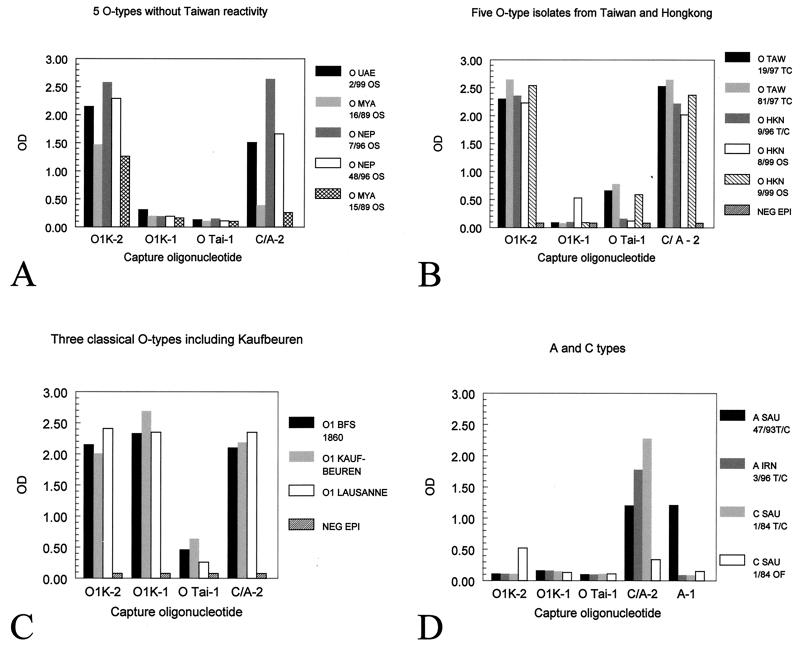FIG. 6.
Characterization of FMDV isolates by SNAP hybridization ELISA. For the identities of the capture probes used, see Table 2. (A) The typical reaction of type O isolates without Taiwan-like reactivity is shown. Such isolates react with the O1Kauf3800 (O1K -2) probe as well as a cross-reaction with the C/A3800 (C/A-2) probe. (B) The typical reaction of type O isolates with Taiwan-like reactivity is shown. Such isolates react as described for panel A and, in addition, with the O Taiwan3777 (O Tai-1) probe. It should be noted that, due to an inherent low melting temperature of the Taiwan-like SNAP probe, full reactivity with the Taiwan-like probe is usually around 0.5 to 1 OD while full reactivity of the other probes may be higher than 2, everything else being equal. (C) Reactivity of Kauf-like isolates. The strong reactivity of Kauf-like isolates (O1 BFS 1860, O1 Lausanne, and O1 Kauf) with the O1Kauf3800 (O1K-2) probe (as all O isolates) as well as with the O1Kauf3777, specific for Kauf-like sequences, is evident. As is true for other type O isolates, such isolates also cross-react with the C/A3800 (C/A-2) probe. (D) Reactivities of selected types A and C FMDV. It can be seen that types A and C generally react well with the C/A3800 SNAP probe (a reactivity not blocked by unlabeled O1Kauf3800 and Asia 1-3800 competitors at 1.5× equimolar amounts [Fig. 7]). Most type A and C isolates react only weakly with the O1Kauf3800 probe, and any reactivity can easily be removed by unlabeled competitors. Of the isolates shown, one is A22-like (A SAU 47/93, which reacted with the A22-3777 probe) while the other three isolates shown, based on currently available SNAP probes, could be identified only as type A or C.

